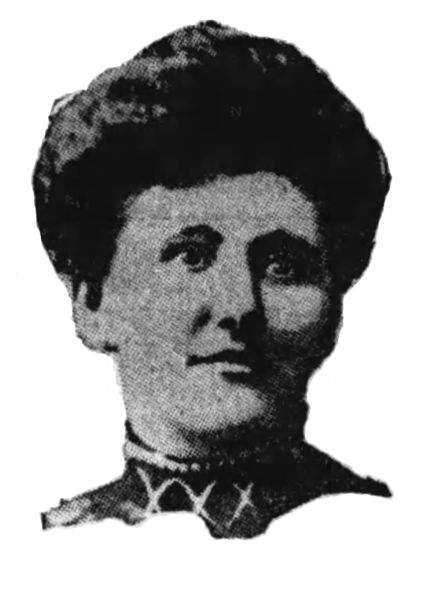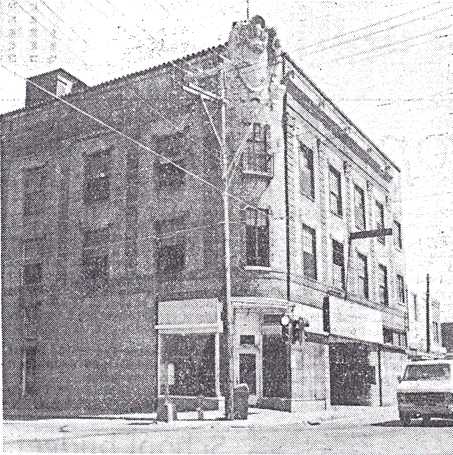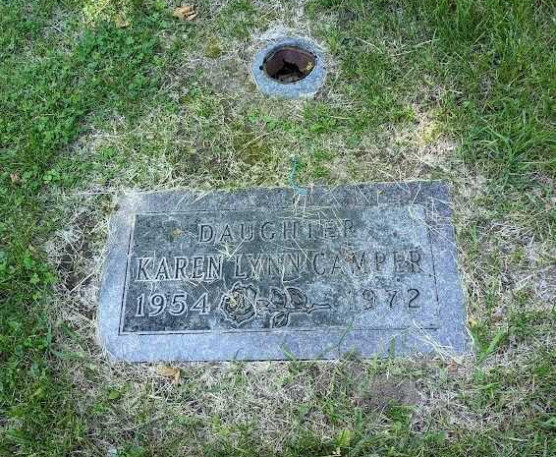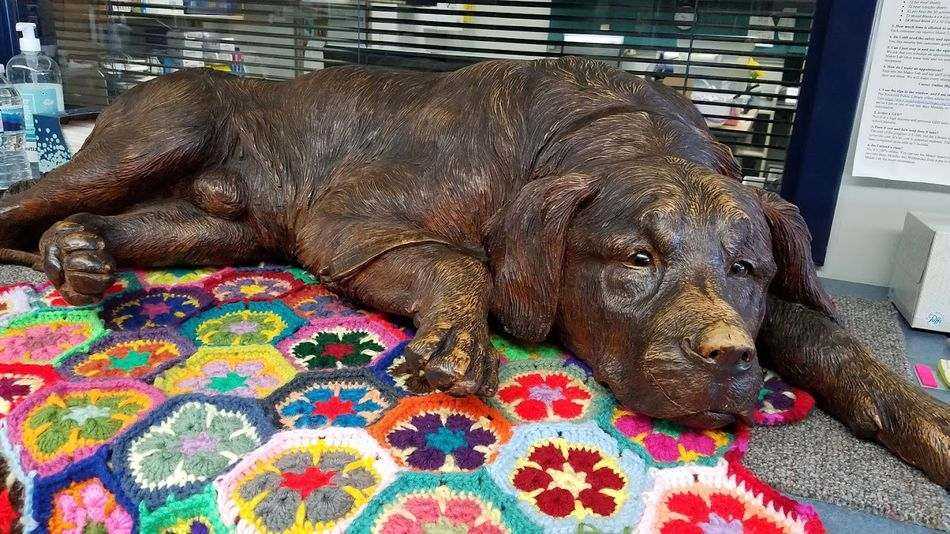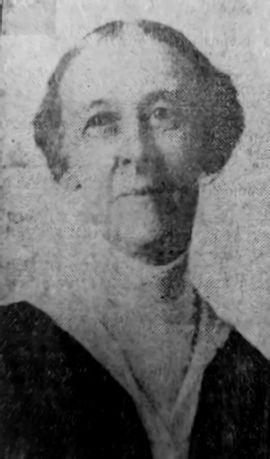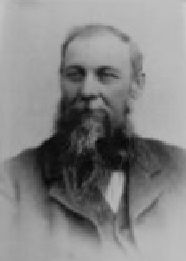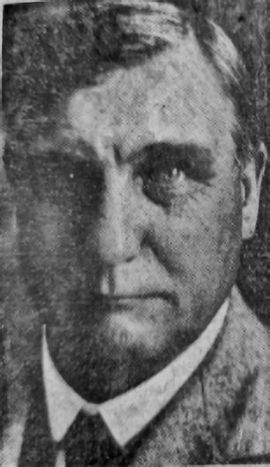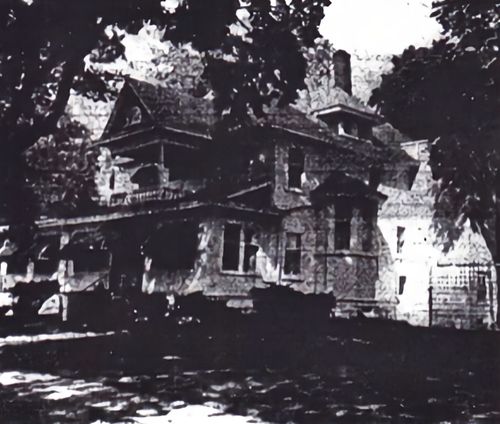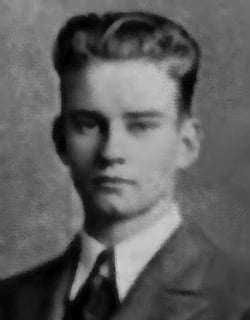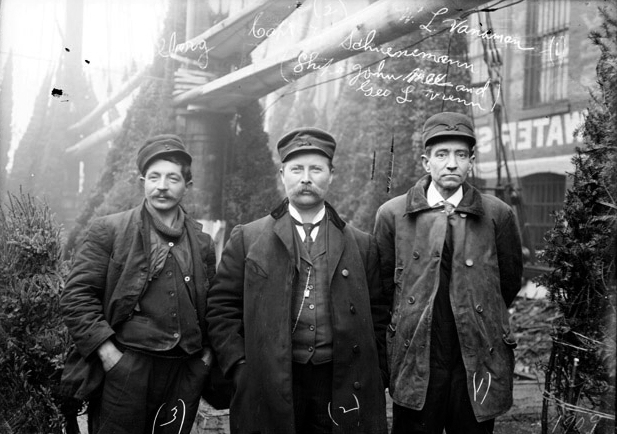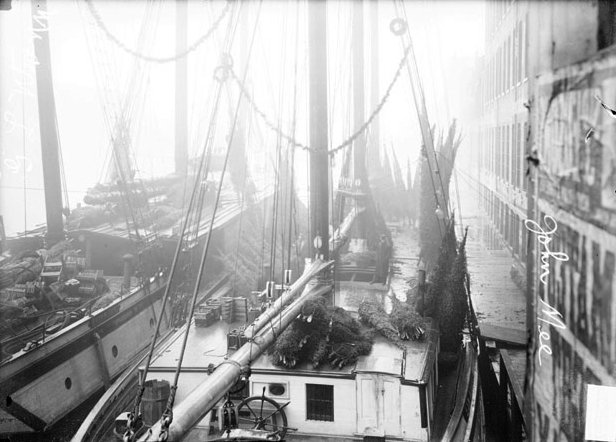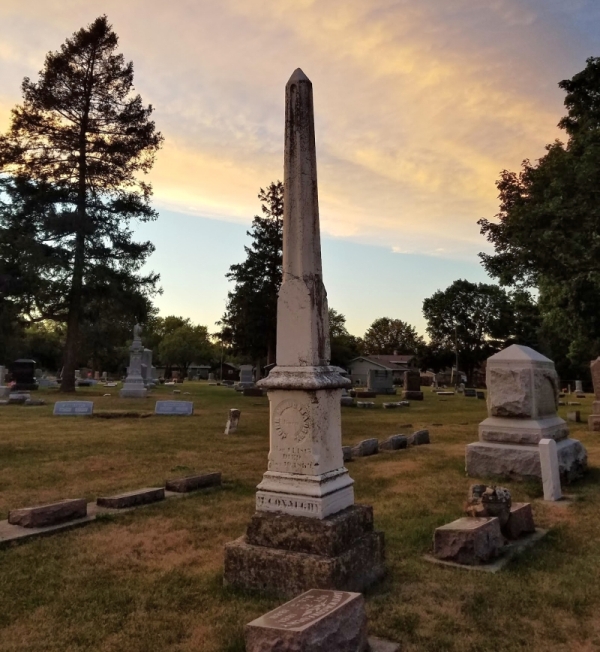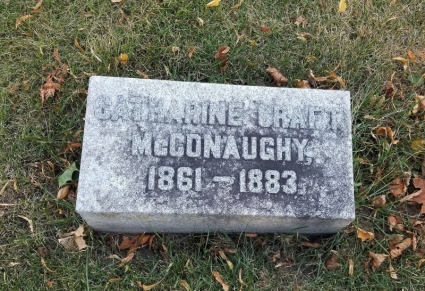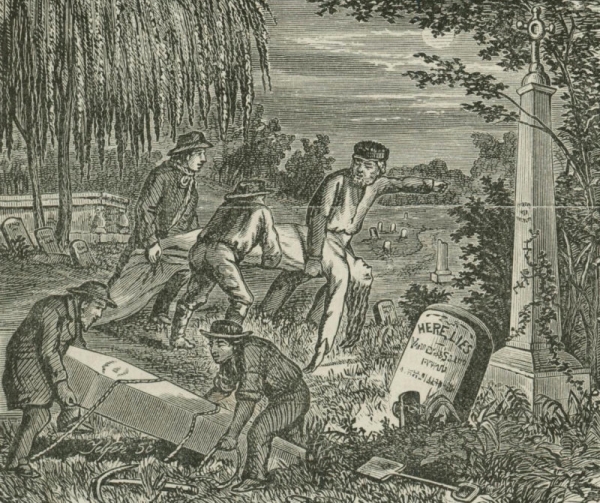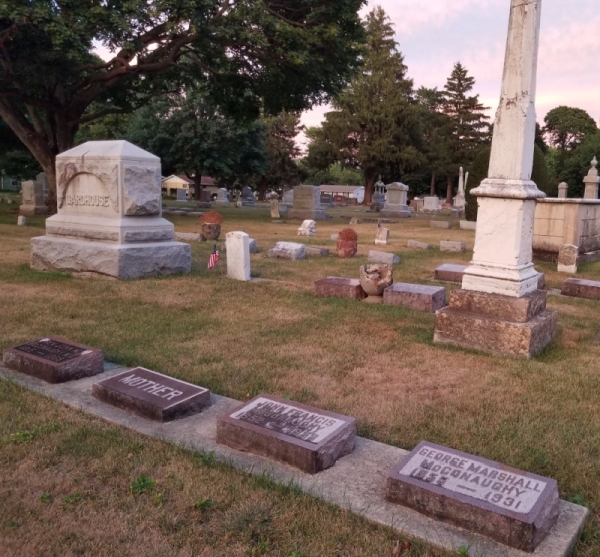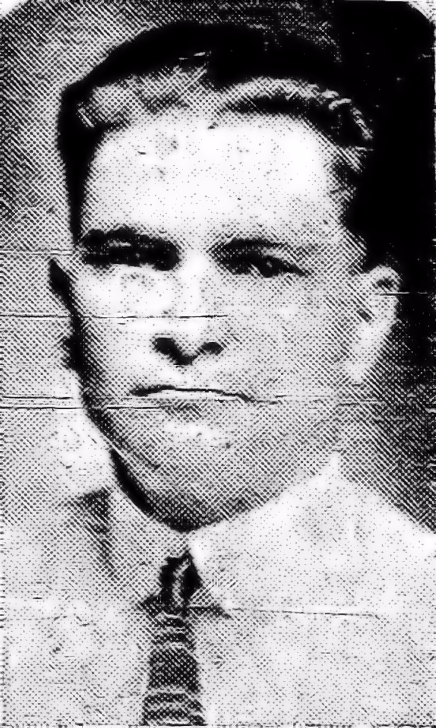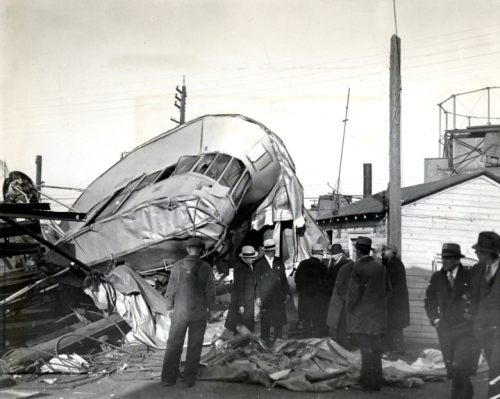This article is written by Dean Thompson from Ghost Head Soup and Kathi Kresol from Haunted Rockford. It describes an encounter that was experienced by the both of them at a public Paranormal Investigation at the Tinker Swiss Cottage hosted by Samantha Hochmann.
Dean Thompson:
In the new normal “feeling chills” could be a sign you have COVID, or in the paranormal field it means something else, but similarly sinister.
That’s how the evening began for Kathi Kresol from Haunted Rockford, along with three members of Ghost Head Soup, and Psychic Medium Sara, as they began their first public investigation session.
“I felt a chill behind me.” Kathi Kresol said.
The thirty or more people in attendance that evening broke apart into three smaller groups. Kathi and I remained in the barn with our first group. A small team from Indiana, stated that when Kathi announced that she had felt something he panned his video camera over in her direction.
“I know a lot of the paranormal themed television shows claim orbs could be dust and stuff, but while I panned my video over to you, I was surprised to see a pretty bright orb.” The investigator explained. He stated that the orb had circled Kathi and went into the chair next to her.
Kathi Kresol:
I have been hosting these Paranormal Events in the Rockford area for 17 years now. We offer these Ghost Investigations so folks can join in with an actual Investigation team. They can use the equipment and see what a real investigation feels like.
We spilt the participants into three groups so that there are smaller groups. Samantha, Sara and I usually sit in on the sessions in different areas. For this particular event, I was stationed in the barn with Dean.
Dean begins the session by explaining the equipment that we will be using for that session. Then we turn out the lights. I need to make something very clear before I go on with this story. I have worked with Sara Bowker for 15 years now. She is the psychic pne and I rely heavily on her impressions. . I sometimes get feelings but rarely do I get details. I was just settling into my chair when I got the coldest feeling on my back. And when I closed my eyes- I saw one of the scariest things I had experienced in a long time. I could clearly picture a young lady -possibly a teenager or a little older. She wore a long white gown that appeared to be wet. She had dark, long hair but had her head down and I couldn’t see her face. She looked for lack of a better description- like the little girl from the movie, “The Ring”.
Dean Thompson:
“I got Cold Chills!”
As the first session completed, Kathi ran and grabbed Sara over to the barn. Some whispering took place as a worried Kathi was not sure what to think about this vision she was receiving. Later we would learn what the “whispering” was all about.
The second team came in and the room changed. It became darker, but playful, people started to hear a meow sound though their devices.
“I can use a laser pointer and really get that cat going.” I casually announced.
While all the cat and mouse games were being played, Kathi and Sara sat in the backroom with their hands on their heads. They would join in the cat hunt briefly but the concern of chills still kept Kathi’s mind preoccupied.
Kathi Kresol:
I did run to get Sara. I just knew that she usually could tell me what was happening. Only this time, she couldn’t. Sara could sense the girl but this spirit did not want to communicate- AT ALL! This made it so much scarier to me. Sara can usually figure out what the spirit wants to say and helps them by communicating. But this girl just lingered there.
Dean Thompson:
The final session was now entering the room, which included a quartet of women who were eager to start a dowsing rod session. After several Tinker Family related questions, the rods started to move without notice.
“Okay who asked a question?” Megan said.
Megan was in charge of the rods and felt a secret question was asked.
“There’s somebody different tonight, that’s here.” Kathi stated. “That’s why Sara is sitting next to me.”
This is when Kathi started to not whisper and spoke aloud about her vision.
Divine Inspiration is a means for the supernatural world to reveal information into certain people. The person receiving the communication would experience a “creative desire” which would explain what Kathi was feeling this evening.
She described the cold chill, and seeing a girl, who was wearing a wet gown, dark hair covering her face, but nothing else was coming though. Sara was next to her the entire time and was not receiving any such contact with this young girl.
“I was just wondering if she is still here.” Kathi said
As the dowsing rods continued Kathi had mentioned a few key details regarding the thoughts. She stated that the girl was not part of the Tinker Family. That she was somebody new here tonight. The words drowning and car were mentioned from the women with the dowsing rod.
“Did someone bring her with them?” One of four quartet asked.
This is when I started to wonder if my previous days research had anything to do with this new entity. I was researching the Forest City Knitting company of Rockford and had discovered some gruesome deaths that had taken place.
“Is your name Emma?” I asked
Sara stated that she also got an Emma in the first session in the red room of the main building.
“Is your name Amy?” I asked
Oddly, one of the four quartet was named Amy.
My own Divine inspirations started to pull forward. I thought that the girl couldn’t remember her name, but after listening to the audio I felt that maybe she was able to validate one of the girls present that night.
“I think I know who the girl is.” I spoke up.
On May 18th 1909, which is a week away from me writing this, the Newspaper article headline read: GIRL SWEPT UNDER TRAIN TO DEATH.
Miss Alma Johnson, aged 26, an employee of the Forest City Knitting company, Rockford, was killed instantly Saturday night by being run into by a St. Paul passenger train due in Rockford at 6 o’clock.
At the time Miss Johnson met her death she was in company with three young women friends on their way to the East Side station of the Illinois Central railway company, at which place one of the young women was to purchase a ticket for Sweden, for which place she intended leaving Sunday.
This is why it took to the third session of the evening to discover the Spirit of Alma Johnson. She waited for the Megan and her three friends to come and speak to her.
Miss Alma Johnson, Alma Englund, Amanda Larson and Alvina Rosander were on their way to Seventh street and it was when the quartet had reached the cross-tracks that they were run down.
I quickly noticed that each of the four girl’s names began and ended with the letter A.
The train was a trifle late but was running at a slow speed and was not going over the regulation speed. The girls had cleared the track it was thought and Miss Johnson’s clothing must have become caught in a part of the engine and she was drawn under the wheels for the other girls were unharmed and all seemed to be at about the same distance from the track.
Earlier Kathi had mentioned that the girl was drenched in a gown and her hair was covering her face. The description of the way Alma was killed is pretty graphic, but would explain why her spirit would remember her name and would appear to Kathi the way that she did.
Miss Johnson was drawn under the engine and the top part of her head was cut off, the left hand cut off just above the wrist and the right foot was severed from the leg just above the ankle.
Keep in mind that Robert Tinker had also lost a foot when he was caught under a train and dragged.
The remains of the body was thrown about ten feet from the right of way and the train was stopped within a double car length of the place where the mishap occurred.
As I read Alma’s story for the first time, I was a little alarmed at the nature of the description, however without these facts, Kathi and I would never had been able to validate young Alma’s story.
Kathi Kresol
I don’t pretend to understand how the ghost thing works- Dean’s thoughts on Divine Inspiration are as good as any I guess. But I am not entirely convinced that this girl is the Alma in the story. Sara validated that Alma was there for Dean and I could tell Sara could communicate with her to get a little more of her story.
My research into Alma’s story showed that Alma was born on January 15, 1882, making her around 27 old when she suffered her horrible accident. She was born in Boros in Vastergotland, Sweden. She still had family back in Sweden, though one brother did live nearby in Shirland. She moved to America about six years prior to her death. She lived in a boarding house at 245 Catherine Street and was hosted by the Swan Sanden family. They held her funeral in their home before carrying her body to the Scandinavian Cemetery.
But since the girl I experienced never spoke, never raised her head or tried to communicate other than the picture of her in my head- I cannot say for certain that it was Alma. I have researched many stories from Rockford’s past. Some were ghost stories, some were horrible murders. Some were the stories of the young women who have thrown themselves into the Rock River that is very near the Tinker Swiss Cottage.
I have spent many years telling these stories trying to be the one who makes sure these people are remembered. I have visited where they were killed or where their bodies were recovered or where their family buried them. I always hope that by telling their stories, that it might bring them some sort of peace. Sara and Samantha help me by talking to them to let them know what we try to do. The spirit could have been Alma- but it also could have been someone else. Maybe it is this thought that made me so frightened during this actual investigation. Maybe I was feeling her fear. It was all very unsettling.
Like I said before, I have been doing this a long time. I always take precautions before we do any of our events. I pray and ask for protection. I have traveled all over the United States visiting haunted locations and have had some truly frightening experiences. But this time was completely different.
Sara, Samantha and I know that sometimes it takes a few times for certain spirits to feel comfortable enough with us to tell their stories. I am posting this on the Haunted Rockford website and will post it on our Facebook page. I sincerely hope tha it was Alma and that by telling her story – that Dean and I can help her move on. And if it wasn’t Alma, then we will find that out too.- with the help of Sara, Megan (who was the one with the dowsing rods that night) and Samanatha. But I will stick close to Sara and Samanatha at the next investigation – just in case I start to sense that horrible, frightening feeling again.
Copyright © 2021 Kathi Kresol, Haunted Rockford Events



